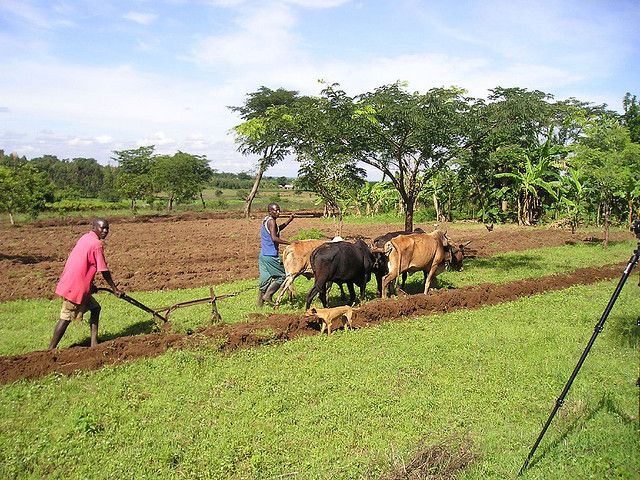By Nicholas Tagliarino, Research Analyst and Peter Veit, Director, Land and Resource Rights Initiative
World Resources Institute (WRI)
At the Golden Globe Awards, Leonardo DiCaprio dedicated his award for Best Actor to the First Nations and Indigenous Peoples of the world. Speaking directly to these populations in his speech, he stated “it is time that we recognized your history and that we protect your indigenous lands from corporate interests and people that are out there to exploit them. It is time that we heard your voice and protected this planet for future generations.”
Ensuring that indigenous and community land rights are respected and protected is important, not only from a human rights perspective, but also as a sound climate mitigation strategy. While there are several ways to achieve secure community land rights, one important approach involves helping governments make socially equitable land decisions.
How Do Land Conflicts Arise?
In many parts of the world, conflicts arise when outsiders claim rights over indigenous and community land. In many parts of Africa and other places around the world, governments legally own or “hold in trust for the people” all land in the country. Many governments designate a considerable percentage of land for various public purposes, such as infrastructure and protected areas , which sometimes encroach on regions historically held and used by Indigenous Peoples and local communities. In other cases, governments transfer or lease land occupied by communities to private companies for natural resource extraction, plantation farming, and other economic activities. When governments extinguish or restrict land and resource rights for these purposes—and especially when governments are corrupt and misuse their authority—communities are at risk of losing their homes and livelihoods.
Yet with the right laws and policies, governments can balance the need for secure land rights and public demands. Three actions can help ensure responsible land and resource governance:
1) Governments should only compulsorily acquire or restrict land rights for genuine public purposes.
Governments often acquire land for legitimate public purposes, such as schools, hospitals and airports. However, in some cases, government-acquired land is designated for purposes that do not serve public interests. In Uganda, government land, originally acquired for conservation purposes, was subsequently transferred to private sugar and palm oil companies. In other cases, land may initially be intended to serve a genuine public purpose, but the government ultimately fails to achieve that goal due to poor planning and financial constraints.
To ensure land continues to serve the public interest, governments should establish democratic processes by which the public can meaningfully participate in land decisions. These processes should include consultations with the public and local landholders. Governments should also conduct social impact assessments to analyze the public benefits against the costs borne by affected landholders. If the costs significantly outweigh the benefits, governments should return land to the original landholders.
2) Laws should limit government discretion to compulsorily acquire or restrict land rights.
In almost all countries, governments must establish a public purpose justification for restricting or limiting land rights. According to a preliminary analysis by WRI’s Land and Resource Rights Initiative, 10 of the 30 national legal systems assessed in Asia, Africa and Latin America grant executive branches broad discretion to interpret what constitutes a “public purpose.” In Zambia, for example, the president can acquire land “whenever he is of the opinion” that it is in the public interest to do so.
Without effective legal measures to check this discretion, governments in these countries can abuse their authority, and arbitrarily eliminate or restrict land rights even when doing so does not serve a genuine public purpose. Under such circumstances, indigenous and local communities are at risk of losing their land rights for questionable purposes.
Laws and policymakers should clearly define procedures for determining whether the extinguishment or restriction of land rights for public purposes is justified. Governments should democratize the legal process for acquiring land, ensuring that the public and affected landholders are consulted and empowered to challenge decisions in court. And lawmakers should limit executive agencies from acting outside the law and altering the purposes for which acquired land is used, unless they receive judicial or legislative approval.
3) Governments should consider ways of achieving public purposes without disrupting land and resource rights.
Infringements on land and resource rights should only occur when there are no less-intrusive alternatives – a measure of last resort. In many cases, governments can serve many public purposes without acquiring land in a compulsory manner. For example, Australia recently established an innovative new conservation program that allows private landowners to form agreements with the government to conserve and restore native vegetation on their land.
Governments can also grant communities land and resource rights without jeopardizing the public good. In Brazil, for example, the government established “extractive reserves,” state-owned lands allocated to traditional communities for sustainable use. These community-managed areas have dramatically lower deforestation rates than other parts of the Brazilian Amazon.
Looking Ahead: Improving Land Governance in 2016
Land disputes between governments and communities are common throughout the world. However, the amount and severity of these disputes may decrease if government land genuinely serves the public, if laws limit government authority, and if governments view disruption of land and resource rights as a last resort. 2016 is a new year—a new opportunity to turn the tide, respect indigenous and community land rights, and ensure the responsible governance of the world’s land and natural resources.
This blog was originally posted on the World Resources Institute (WRI) website: https://www.wri.org/blog/2016/01/putting-leonardo-dicaprio%E2%80%99s-words-action-3-ways-ensure-responsible-land-and-resource

